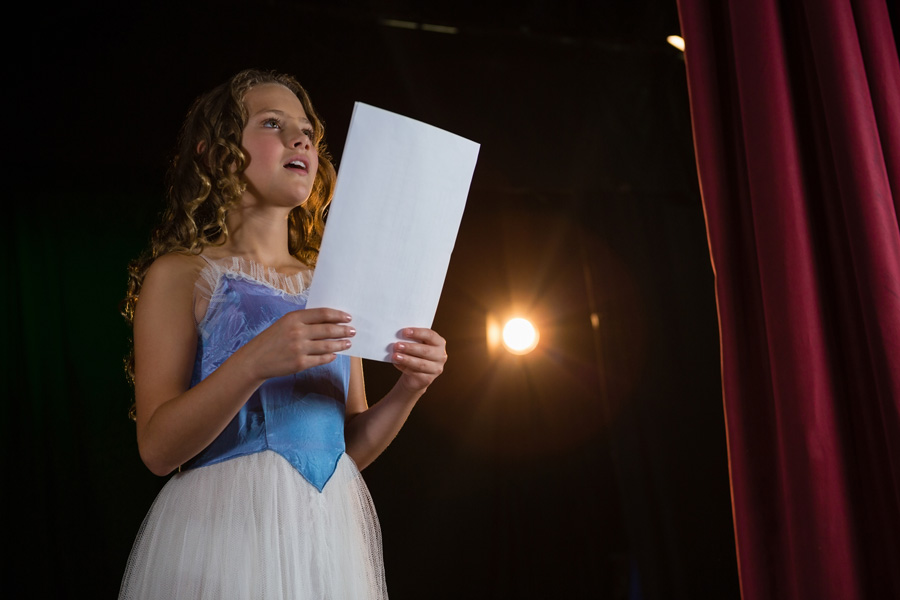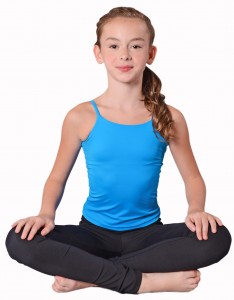Alexa Lane - Holistic Counseling
Mind - Body - Soul
Benefit of Children’s Theatre

Our Children’s Theatre Program prepares students with the skills needed to either enter college as a theatre major or pursue a career as a professional singer, dancer, and actor. The program focuses on the fundamental aspects of theatre including music, learning dialogue and lyrics, dance, set design, costumes, and props.
Students will learn contemporary vocal techniques to build their vocal skills safely. A solid acting technique is taught that will help young actors break down a script and deliver a truthful, organic performance. Dance terminology and choreography, movement skills, and relaxation techniques are taught in each class to equip young musical theatre performers with the strength to move with grace and ease.
What are some of the benefits of children’s theatre program?
Professional Development
In the current theatre market, children are expected to be prepared for their auditions. This means memorizing their lines, making clear acting choices, and having polished songs to sing for auditions. This is why training is so important. Taking the time to study acting and voice will help your child have the skills to audition for the school play or enter college as a theatre major.
Personal Enrichment
Numerous studies have been written on how arts education can enrich a child’s life. Specifically, studying theatre can help children have the confidence to express themselves and is a great tool for social/emotional learning.
Through the process of storytelling, children learn to connect to their emotions and to be empathetic towards others. These skills translate into children becoming powerful public speakers and leaders. Theatre classes can also help with creative thinking and problem solving.
Whether your child participates in a theatre class for enrichment or professional development, your child will have fun being a part of a Musical Production or Play. They will share the experience of telling stories through songs, dance, and dialogue with other children and grow from the experience. I have taught many children over the years and have seen lifelong friendships develop that started in a performing arts class and the positive impact the arts have had on young lives.
Barre Class

Thinking about trying a barre class, but are worried that you have no dance experience?
It’s true that some of the exercises in the class are inspired and drawn from ballet and jazz dance; however, you do not need to be a dancer to enjoy barre classes. One of the many benefits of a barre class is that the class offers a total body workout in less than an hour.
Cardiovascular Fitness
The barre classes that I teach begin with easy to follow cardio dance. I work with light hand weights during the cardio section to tone the upper body.
Muscular strength and endurance
After the cardio section, strengthening exercises are performed at the barre or center floor. Here you will you will find ballet leg positions and exercises that may be performed in, lateral rotation, “turn out” or parallel. Working in lateral rotation will tone up your gluteal muscles and thighs and target muscles that may be missed in traditional weight training. The barre exercises are performed using multiple repetitions to train muscular endurance and sculpt a long, lean body. Core stability exercises utilizing resistance bands are performed on the mat or standing to sculpt further and strengthen your entire body. You will most likely feel a burn and may be sore after your class, but these exercises will not bulk you up.
Flexibility
Barre classes take the body through a full range of motion and will help increase your overall flexibility. Dynamic flexibility exercises are used throughout the class, particularly in the warm-up. Due to a thorough warm-up and muscle work, your body is better prepared for the end of class stretches.
Weight Loss
Barre classes can help you lose weight and promote lean muscle gains. The cardio component will help burn calories and the muscle work will build lean muscles creating a slender figure. Barre classes can help increase your metabolic rate due to the fact that they are a comprehensive exercise class.
Positive Psychology
Exercise has been shown to reduce feelings of depression, particularly aerobic exercise and resistance training. Barre classes not only give you a great physical workout, but are also upbeat and fun contributing to an overall positive mental state.
With all the benefits above, it’s easy to see why a well-designed barre class provides cardiorespiratory fitness, muscular fitness, flexibility, body composition, and neuromotor fitness covering all the components of physical fitness.
How to Create Your Acting and Dance Resume

Acting and Dance Resume
Creating your acting and dance resume, organizing your credits, and putting them in the proper format can be a daunting task for new talent entering the entertainment industry. Your headshot and performing arts resume are important marketing tools and often the first thing agents and casting associates look at, so you want these two tools to look polished and professional. Your acting and dance resume and headshot should be 8 x 10. Use plain white paper and a clean, legible font. Below is a standard layout to help get you started.
Top Portion
Line 1: Your name should be on top in bold letters.
Line 2: Under your name, place your Union affiliations (AEA, SAG-AFTRA)
Line 3: Your Agency’s or Management’s Logo
- If you do not have representation, place your contact information (cell phone, email, website)
Line 4: Optional: Personal Statistics (Height, Weight, Hair color, Eye color)
Line 6: Optional: Vocal Range (If you are a singer)
Credits
- Organize your credits into separate categories: Film, Television, Commercials, and Theatre.
- List your credits in each category in chronological order with your most recent credit first. Alternatively, you could list your most impressive credits first.
- Divide each credit into 3 columns:
- Name of project
- Role
- Director/Production Company for film and television or name of theatre for theatrical credits
Line 7: Film Credits
List the name of the film, the role you played (Principal, Supporting, Lead), Director of the project and/or Production company
Example:
FILM
Dreamland Lead Dir. Joe Smith/ Lion Films
Line 8: Television Credits
Format is the same as film credits. Role categories (Co-star, Guest Star, Recurring Co-star, Series Regular)
Example:
TELEVISION
Boston Medical Co-star Dir. John Jones/NBC
Line 9: Commercial Credits
If you have many commercial credits, write “List available upon request”
Line 10: Theatre Credits
List the name of the play, the role you played, and the theatre
Example:
THEATRE
Burn This Anna Hartford Theatre
Bottom Portion
Line 11: Training
List the school you attended or teacher you trained with in the first column, the type of class in the second column, and the degree or type of class in the third column.
TRAINING
Example: Acting Academy Method Acting Scene Study
Example: Milton College BFA
Example: Mary Sue Dance Ballet, Jazz
Line 12: Special Skills
List any special skills or certifications you have. You may also list foreign accents here or create a separate category.
I hope this helps!
Sample Resume
ACTRESS NAME
Artist Agency Logo SAG-AFTRA
Phone: (333) 246-9642 Email: actressname@gmail.com
Website: actressname.com
_____________________________________________________________________ FILM
Dreamland Lead Dir. Joe Smith/ Lion Films
TELEVISION
Boston Medical Co-star Dir. John Jones/NBC
THEATRE
Burn This Anna Hartford Theatre
TRAINING
Acting Academy New York Bachelor of Arts
Andrew John Method Acting Scene Study
Broadway Dance Dance Ballet, Jazz
SPECIAL SKILLS
Yoga, scuba diving
ACCENTS
British, French
MINDFULNESS FOR CHILDREN
Without Mindfulness: Stimulus > Reaction
With Mindfulness: Stimulus > Mindfulness > Response

Mindfulness training helps children engage in the present moment. It teaches kids to create the space to breathe, relax, and be with whatever emotion is present so that they can respond thoughtfully. It has the ability to reduce impulsive reactions.
Does this sound too good to be true?
Mindfulness-Based Interventions have approximately 35 years of research and development. Jon Kabitt-Zinn, Ph.D. developed mindfulness programs in the late 1970s at the University of Massachusetts Medical School. Later secular mindfulness programs were integrated into the health care system and hospitals.
Currently, mindfulness programs are being offered in health care facilities, mental health programs, and education. In fact, a recent study in 2011 by Harvard neuropsychologist Britta Holzel and her colleagues found that an eight-week Mindfulness Based Stress Reduction Program resulted in increases in gray matter concentration in brain regions involved in learning, memory, emotional regulation, self-referential processing, and perspective taking.
How do these discoveries translate to your child’s brain?
- Better focus and concentration
- Increased sense of calm
- Improves impulse control
- Increased self-awareness
- Skillful responses to difficult emotions
- Increased empathy, attunement, and understanding of others
- Development of natural conflict resolution skills
Simply put, mindfulness helps children develop the life skills necessary to be a healthy, happy human being. By teaching our children to take a few minutes each day to sit quietly, breathe, and listen, we are helping them develop the ability to pay attention to what is happening all around them. We are teaching them to be with their emotional experience without blocking or reacting. Children learn to live in their bodies and experience their inner landscape (emotional/mental health) with a heightened sense of curiosity and wholeheartedness.
Why is Mindfulness training important for your family?
Beyond all the benefits listed above, mindfulness develops and strengthens the parent-child relationship by increasing intuition. The practice increases the development of executive functions in the brain which affects our ability to sense situations or have a “gut feeling” about something. This process results in both parent and child developing a deeper connection to each other and the ability to attune to each other’s feelings.
By teaching children to cultivate these empathic qualities toward themselves, it inspires compassion for all living things.
Mindfulness for Children is one more tool to bring peace to planet Earth.
Above is a picture of Antonia Torello, one of my yoga students and one of the stars of my short film “Child Evolve,” a film on yoga, meditation, and mindfulness for children. Stay tuned, Coming Soon!
Mindfulness study on adolescents